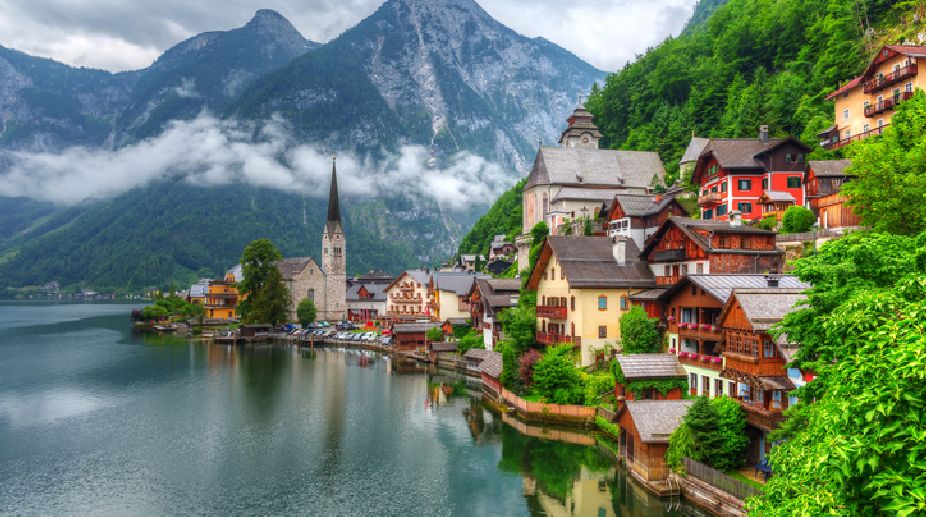In an effort to highlight places of interest in countries across the world, their varied culture, economy and history, The Statesman brings to you a Weekly Focus on countries with which India shares diplomatic ties and friendship. This week’s focus is on Austria. Know all about the country.
Capital: Vienna
Advertisement
Currency: Euro Ethnic groups: Austrians 91.1 per cent, former Yugoslavs 4 (includes Croatians, Slovenes, Serbs, and Bosniaks), Turks 1.6, Germans 0.9, other or unspecified 2.4 (2001 census)
Languages: German (official nationwide) 88.6 per cent, Turkish 2.3, Serbian 2.2, Croatian (official in Burgenland) 1.6, other (includes Slovene, official in South Carinthia, and Hungarian, official in Burgenland) 5.3 (2001 est.)
Religion: Catholic 73.8 per cent, Protestant 4.9, Muslim 4.2, Orthodox 2.2, other 0.8 (includes other Christian), none 12, unspecified 2 (2001 est.)(2010 est.)
Climate: Summer temperature can reach 30°C or more, evenings are usually cool. May, September and the first half of October tend to be the driest months, April and November tend the wettest. The winter snow lasts from late December through March in the valleys, from November through May at about 1,800 metre, and is often permanent above about 2,500 metre.
Schengen Area: Austria is a part of the Schengen area. For visa, general documents required are application form, two photos, passport valid for at least three months beyond return date ~ and copies of your previous visas ~ are required, travel health insurance (confirmation of minimum 30,000 euro coverage within Austria and the entire Schengen area), a cover letter stating the purpose of visit and itinerary, You can fly direct from New Delhi to Vienna with Austrian Airlines and Air India. There are 10 weekly Air India flights on this route. Other airlines are Lufthansa, KLM, Thai Airways and Ethiopian Airways.
Cakes and desserts: Viennese cuisine borrows heavily from Hungary, Serbia, Romania and Dalmatia. Broth-based soups, dumplings, cheese spreads, and stewed and breaded meats are all commonplace, but the real star of the show is confectionary. Austria’s desserts and cakes are renowned, and patisserie windows display towers of tortes adorned with intricate icing. Gourmet culture is particularly evident in Vienna’s cafés, where coffee drinking has been raised to a high art. Some of the specialities are Wiener Schnitzel, Tafelspitz, Tiroler Speckknödel, Liptauer, Apfelstrudel, Salzburger Nockerln, Sacher Torte.
About 200 collaborations
As a member of the EU since 1995, Austria is an important link for India in its relationship with Europe, especially with countries of central and east Europe. Trade with India continues to experience a very positive trend at a much more dynamic speed than Austria’s overall foreign trade in both imports and exports. The results for the January-December 2016 mark the third consecutive year in which India-Austria trade entered a significant recovery path after having slowed down in the years following the economic crisis until 2014. There have been more than 200 collaborations, including 100 technical collaboration and 60 joint ventures between Indian and Austrian firms, especially in the fields of steel, manufacturing technology, railway and transport, equipment and metallurgy. India’s main exports to Austria are footwear, textiles, leather, apparel and clothing accessories, vehicles, rolling stock, machinery and mechanical appliances, electrical machinery and equipment, organic chemicals and pharmaceutical products. Austrian technology enjoys an excellent reputation in India.
CULTURAL HAVENS
Vienna: Vienna is a cultural haven for music, fine art and architecture lovers from all over the world. The city has a rich performance art tradition, hosting over 200 balls a year, and a variety of classical music concerts honouring the many famous composers who once called Vienna home, including Mozart, Beethoven and Brahms. Highlights are Hofburg (Austria’s Imperial Palace) and the Kunsthistorisches, Belvedere Palace.
Salzburg: The birthplace of Wolfgang Mozart. Salzburg is surrounded by the breathtakingly epic Alps mountain range, affording rich history and stunning natural beauty simultaneously.
Innsbruck: Famous for hosting the Winter Olympics twice, in 1964 and 1976, this city is one of the best winter sports destinations in the world. Besides skiing or snowboarding, one can explore the Innsbruck Cathedral, the bell-making museum, or The Emperor’s Tomb: Hofkirche and the Museum of Maximilian I. Other tourist attractions include Zell am See, Salzkammergut ( a Unesco World Heritage Site), the Styrian Armoury (Landeszeughaus), Kitzbüheler Horn, Melk Benedictine Abbey (one of the world’s most famous monastic sites), Krimmler Ache (Austria’s Tallest Waterfalls), Medieval Burg Hochosterwitz, The Pilgrimage Church in Maria Saal and Eisriesenwelt (The World of the Ice Giants).
Compiled by Kunal Jain (kunaljain@thestatesman.com)











